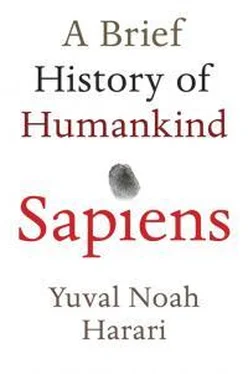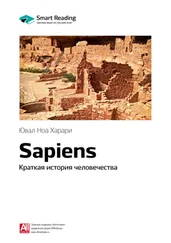During the past 500 years modern science has achieved wonders thanks largely to the willingness of governments, businesses, foundations and private donors to channel billions of dollars into scientific research. These billions have done much more to chart the universe, map the planet and catalogue the animal kingdom than did Galileo Galilei, Christopher Columbus and Charles Darwin. If these particular geniuses had never been born, their insights would probably have occurred to others. But if the proper funding were unavailable, no intellectual brilliance could have compensated for that. If Darwin had never been born, for example, we’d today attribute the theory of evolution to Alfred Russel Wallace, who came up with the idea of evolution via natural selection independently of Darwin and just a few years later. But if the European powers had not financed geographical, zoological and botanical research around the world, neither Darwin nor Wallace would have had the necessary empirical data to develop the theory of evolution. It is likely that they would not even have tried.
Why did the billions start flowing from government and business coffers into labs and universities? In academic circles, many are naïve enough to believe in pure science. They believe that government and business altruistically give them money to pursue whatever research projects strike their fancy. But this hardly describes the realities of science funding.
Most scientific studies are funded because somebody believes they can help attain some political, economic or religious goal. For example, in the sixteenth century, kings and bankers channelled enormous resources to finance geographical expeditions around the world but not a penny for studying child psychology. This is because kings and bankers surmised that the discovery of new geographical knowledge would enable them to conquer new lands and set up trade empires, whereas they couldn’t see any profit in understanding child psychology.
In the 1940s the governments of America and the Soviet Union channelled enormous resources to the study of nuclear physics rather than underwater archaeology. They surmised that studying nuclear physics would enable them to develop nuclear weapons, whereas underwater archaeology was unlikely to help win wars. Scientists themselves are not always aware of the political, economic and religious interests that control the flow of money; many scientists do, in fact, act out of pure intellectual curiosity. However, only rarely do scientists dictate the scientific agenda.
Even if we wanted to finance pure science unaffected by political, economic or religious interests, it would probably be impossible. Our resources are limited, after all. Ask a congressman to allocate an additional million dollars to the National Science Foundation for basic research, and he’ll justifiably ask whether that money wouldn’t be better used to fund teacher training or to give a needed tax break to a troubled factory in his district. To channel limited resources we must answer questions such as ‘What is more important?’ and ‘What is good?’ And these are not scientific questions. Science can explain what exists in the world, how things work, and what might be in the future. By definition, it has no pretensions to knowing what should be in the future. Only religions and ideologies seek to answer such questions.
Consider the following quandary: two biologists from the same department, possessing the same professional skills, have both applied for a million-dollar grant to finance their current research projects. Professor Slughorn wants to study a disease that infects the udders of cows, causing a 10 per cent decrease in their milk production. Professor Sprout wants to study whether cows suffer mentally when they are separated from their calves. Assuming that the amount of money is limited, and that it is impossible to finance both research projects, which one should be funded?
There is no scientific answer to this question. There are only political, economic and religious answers. In today’s world, it is obvious that Slughorn has a better chance of getting the money. Not because udder diseases are scientifically more interesting than bovine mentality, but because the dairy industry, which stands to benefit from the research, has more political and economic clout than the animal-rights lobby.
Perhaps in a strict Hindu society, where cows are sacred, or in a society committed to animal rights, Professor Sprout would have a better shot. But as long as she lives in a society that values the commercial potential of milk and the health of its human citizens over the feelings of cows, she’d best write up her research proposal so as to appeal to those assumptions. For example, she might write that ‘Depression leads to a decrease in milk production. If we understand the mental world of dairy cows, we could develop psychiatric medication that will improve their mood, thus raising milk production by up to 10 per cent. I estimate that there is a global annual market of $250 million for bovine psychiatric medications.’
Science is unable to set its own priorities. It is also incapable of determining what to do with its discoveries. For example, from a purely scientific viewpoint it is unclear what we should do with our increasing understanding of genetics. Should we use this knowledge to cure cancer, to create a race of genetically engineered supermen, or to engineer dairy cows with super-sized udders? It is obvious that a liberal government, a Communist government, a Nazi government and a capitalist business corporation would use the very same scientific discovery for completely different purposes, and there is no scientific reason to prefer one usage over others.
In short, scientific research can flourish only in alliance with some religion or ideology. The ideology justifies the costs of the research. In exchange, the ideology influences the scientific agenda and determines what to do with the discoveries. Hence in order to comprehend how humankind has reached Alamogordo and the moon – rather than any number of alternative destinations – it is not enough to survey the achievements of physicists, biologists and sociologists. We have to take into account the ideological, political and economic forces that shaped physics, biology and sociology, pushing them in certain directions while neglecting others.
Two forces in particular deserve our attention: imperialism and capitalism. The feedback loop between science, empire and capital has arguably been history’s chief engine for the past 500 years. The following chapters analyse its workings. First we’ll look at how the twin turbines of science and empire were latched to one another, and then learn how both were hitched up to the money pump of capitalism.
15
The Marriage of Science and Empire
HOW FAR IS THE SUN FROM THE EARTH? It’s a question that intrigued many early modern astronomers, particularly after Copernicus argued that the sun, rather than the earth, is located at the centre of the universe. A number of astronomers and mathematicians tried to calculate the distance, but their methods provided widely varying results. A reliable means of making the measurement was finally proposed in the middle of the eighteenth century. Every few years, the planet Venus passes directly between the sun and the earth. The duration of the transit differs when seen from distant points on the earths surface because of the tiny difference in the angle at which the observer sees it. If several observations of the same transit were made from different continents, simple trigonometry was all it would take to calculate our exact distance from the sun.
Astronomers predicted that the next Venus transits would occur in 1761 and 1769. So expeditions were sent from Europe to the four corners of the world in order to observe the transits from as many distant points as possible. In 1761 scientists observed the transit from Siberia, North America, Madagascar and South Africa. As the 1769 transit approached, the European scientific community mounted a supreme effort, and scientists were dispatched as far as northern Canada and California (which was then a wilderness). The Royal Society of London for the Improvement of Natural Knowledge concluded that this was not enough. To obtain the most accurate results it was imperative to send an astronomer all the way to the south-western Pacific Ocean.
Читать дальше



![Юваль Ной Харари - Sapiens. Краткая история человечества [litres]](/books/34310/yuval-noj-harari-sapiens-kratkaya-istoriya-cheloveche-thumb.webp)





![Юваль Ной Харари - 21 урок для XXI века [Версия с комментированными отличиями перевода]](/books/412481/yuval-noj-harari-21-urok-dlya-xxi-veka-versiya-s-ko-thumb.webp)


